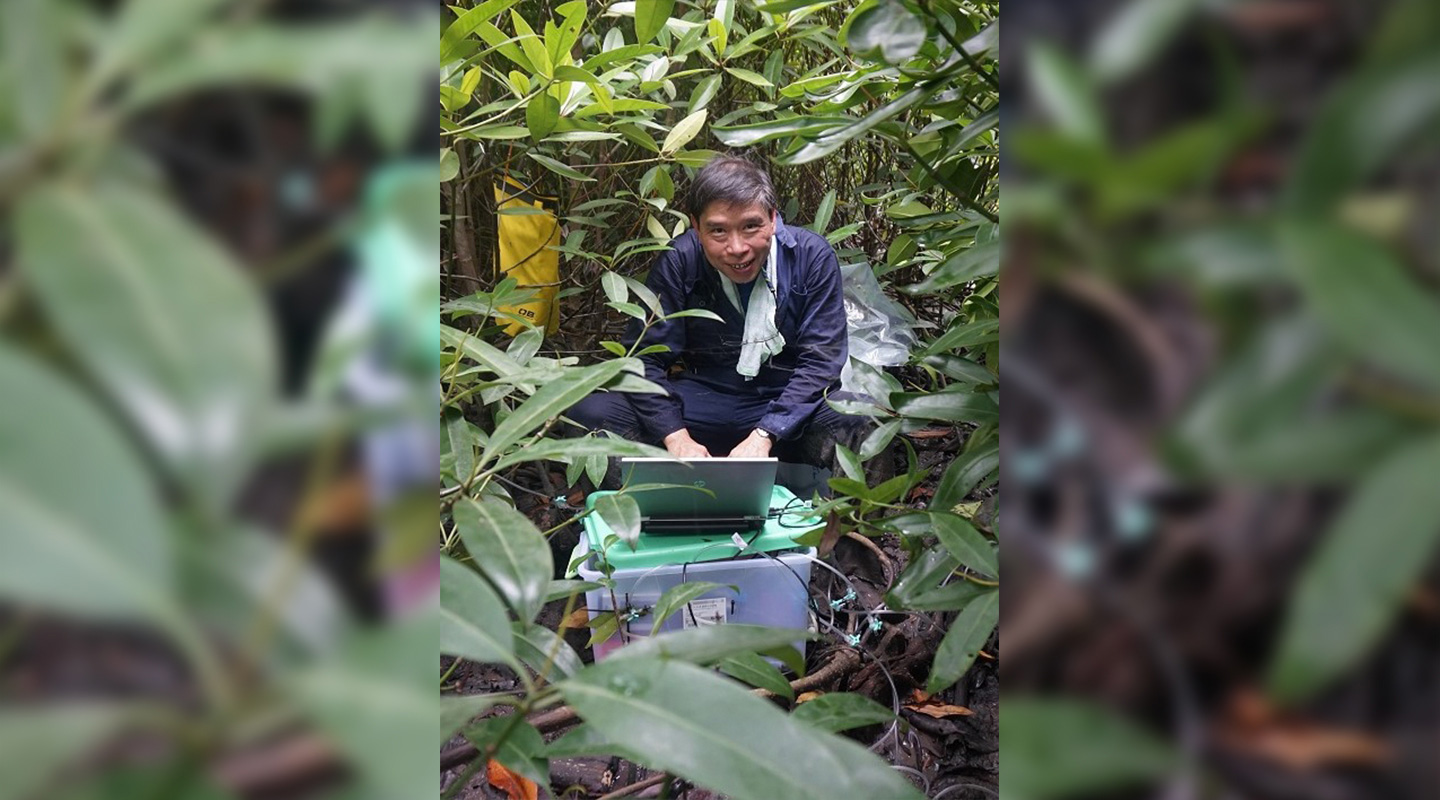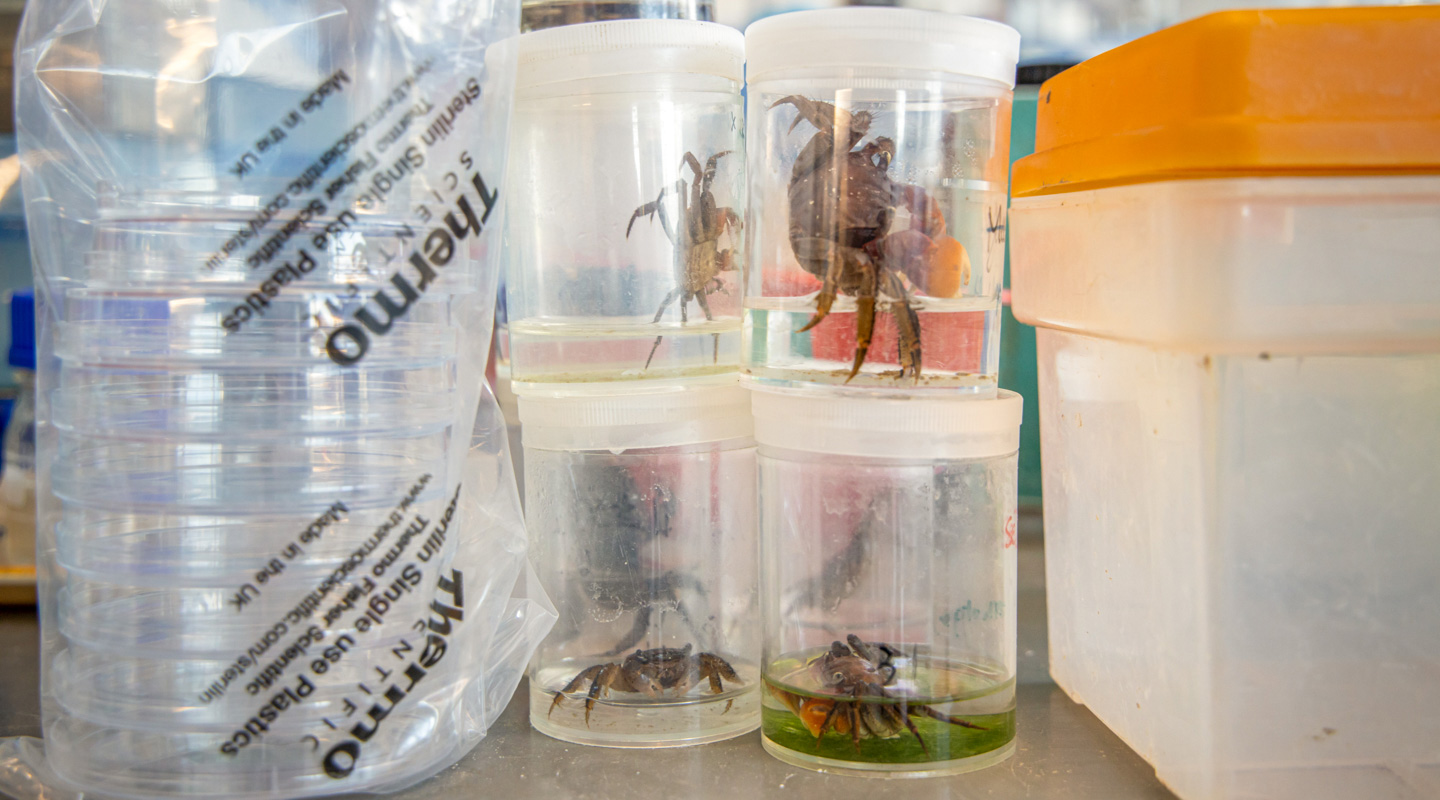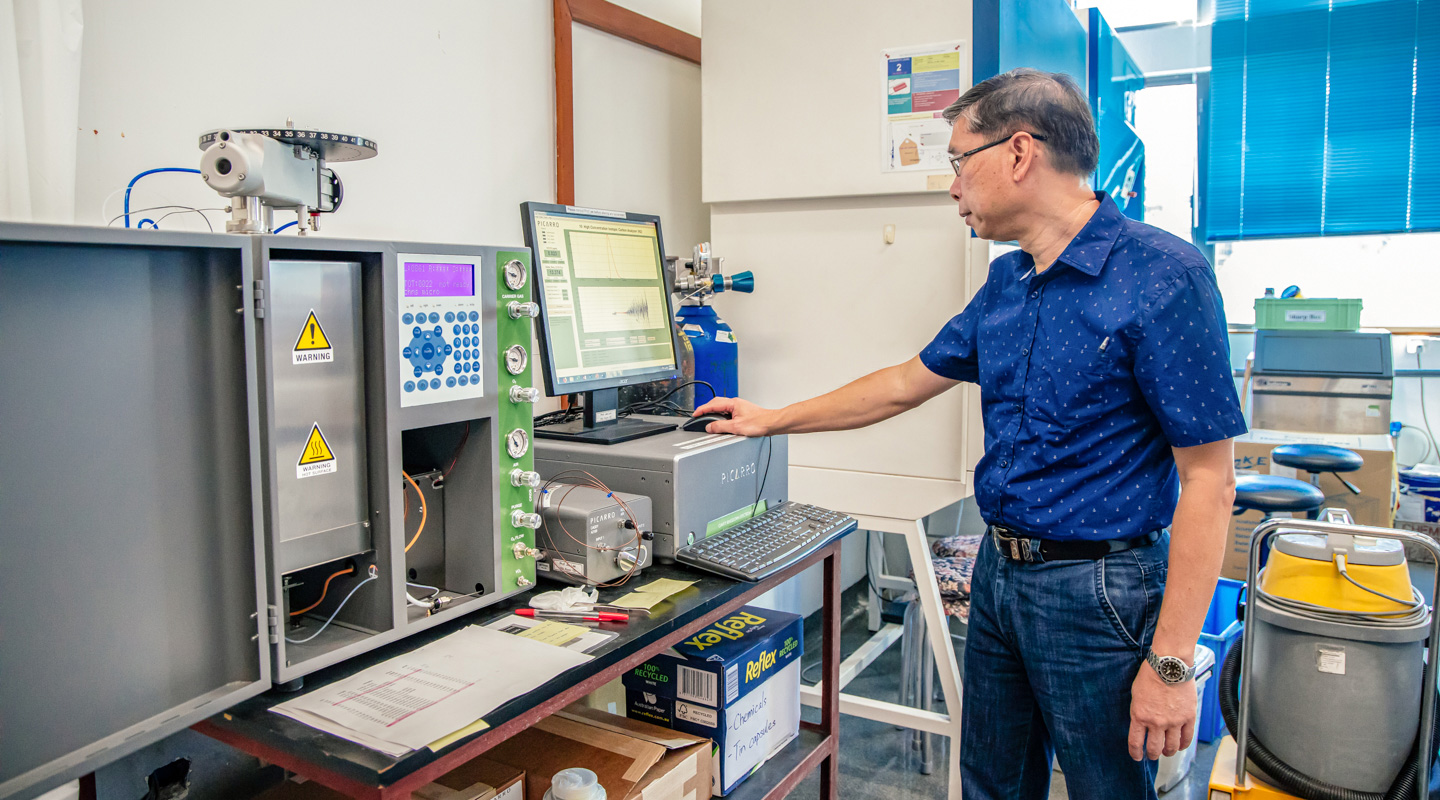Mangroves on a Mission
Joe Lee discovers the amazing carbon-storing power of mangroves

The cobra was slinking its way into his hut when Prof. Joe Lee, studying for his doctorate at the time, first caught sight of it. He watched closely. But he didn't see it come back out.
The ecologist wanted nothing more than to rest, after a nine-hour day collecting samples under blazing summer sun in the mangrove swamps of Mai Po. But now his hut, his basic home in the marsh, had another occupant.
Staying outside for the night would mean getting eaten alive by mosquitoes. Staying in the hut, well, what if the biologist's hand fell out of bed while he slept, and disturbed the snake?
Fortunately, Professor Lee had grown up with a father who worked in a snake shop. But most of all, he was exhausted. The CUHK scientist tucked the mosquito netting in as tight as he could and hoped for the best.
'I was so tired that I didn't care less,' Professor Lee recalls. 'And the night passed. I never saw the snake again.'
Starting with those early days in Hong Kong, Professor Lee has spent 35 years in the field studying mangrove forests and tidal wetlands around the world. It's been exacting research in a challenging environment. Cobra venom has been avoided, but there have been 'a lot of bug bites,' he jokes.

He specializes in the trophodynamics of tropical estuarine ecosystems. That discipline looks at the metabolism of a system such as a mangrove, and how energy and nutrients flow through it.
His most recent work demonstrates that the carbon-storage capacity of mangroves has been drastically underestimated, with mangroves storing 23% more carbon than previously calculated. That's a vital insight, published in the journal Nature Communications, in the fight against a warming planet.
Mangroves occupy only around 130,000 square kilometres globally, but are three to five times more impactful in terms of storing carbon than a typical terrestrial forest. This mitigates the release of greenhouse gas, but also suggests that the destruction of mangrove habitats will exacerbate gas release.
Professor Lee believes the general attitude toward mangroves is dismissive. It's a constant fight against time to protect mangrove habitats from degradation—until recently, around 1% of Southeast Asia's mangroves vanished every year. Mangroves are often viewed as dispensable swamps in the relentless push to develop expensive seaside land.
Mangroves are not only fragile, they are also highly complex systems. Professor Lee's latest study, a collaboration with partners internationally and at the University of Hong Kong, demonstrates that the wildlife in mangrove systems around the world has few redundancies. If a species is exterminated, there is often nothing to replace it in terms of the ecological function it performs.

For instance, certain species of crab process decaying animal matter. If those crabs are caught and removed, nothing else will fulfil that role. As a result, the entire chemistry of the mangrove begins to fall apart.
There's little 'buffering capacity' in mangrove systems as far as fauna are concerned, explains Professor Lee, a specialist in the study of brachyuran crabs in particular. 'There's a wide range of species, but low functional redundancy. Removing one species could have a big effect.'
Professor Lee's career path could have been so different. For his doctorate, he was planning to study the cold waters of the rocky shores in the Pacific northwest. But a competing scholarship from the Swire Group changed his mind, funding three years of research in wetland ecology, stationed in Mai Po.
'I got my grounding in Mai Po,' he recalls, often spending nights at a time in a hut next to the water. 'It was a very precious phase of my life, and I learnt to become a different person, not just a scientist.'
Those bug bites have not been for naught. Professor Lee, who holds a post in CUHK's School of Life Sciences, is the chair of the IUCN Mangrove Specialist Group. It pulls together more than 50 experts from around the globe, pooling knowledge to protect mangroves from diverse fields such as conservation, restoration and resource management.
At the outset of Professor Lee's career, the emphasis on mangroves was that they are productive, exporting carbon by breaking down plant matter that then feeds fish, while sheltering fingerlings. But the amount of carbon they export has, on further study, proved to be a lot smaller than first assumed.
Now the attention has shifted to how much carbon mangroves can store. They decompose tree trunks and plant matter, but this occurs very slowly due to the lack of oxygen in the mangrove system. This slow pace helps the mangroves store carbon for long periods of time, in a way that peat bogs do in freshwater systems.

Again, the truth is more nuanced, that they do store a lot of carbon while exporting other portions. Mangroves also fix carbon dioxide that they absorb from the atmosphere, and trap carbon matter coming in on the incoming tide.
It's a complex picture, one that a trophodynamics expert must capture in full. 'A scientist's job is to tell the truth of what is actually happening,' Professor Lee says.
By Alex Frew McMillan
Photos by Eric Sin
This article was originally published on CUHK Homepage in Jun 2020.

